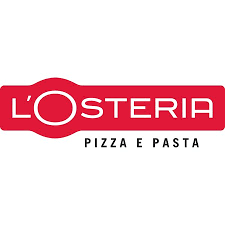Zusammenfassung
zur Marktentwicklung
Details zum Inhalt
 Information
Information
- Anzahl der Seiten : 30 seiten
- Format : Digitale und PDF-Versionen
- Letzte Aktualisierung : 06/10/2020
 Zusammenfassung und Auszüge
Zusammenfassung und Auszüge
1 Market overview
1.1 Definition and scope of study
Pizza originated in Italian cuisine, and the modern pizza was invented in Naples. Pizza is made from bread dough, topped with various ingredients (e.g. tomato sauce, cheese, olives) and baked in the oven.
The main distribution channels for pizza are
- Commercial catering (restaurants, fast-food chains, sometimes franchises).
- Hypermarkets and supermarkets
- Contract catering
The pizza market in Austria appears to be relatively stable. Traditionally, pizzas are eaten in restaurants. A few global brands dominate the market in fast-food chains, but the market is more fragmented in traditional restaurants.
However, the trend is increasingly towards home consumption. This evolution is facilitated by the online catering and delivery sector, but also by a wider range of products such as frozen pizzas. Takeaway or eat-in consumption is also being developed by the arrival of FoodTech players. this has helped to further stimulate growth in the pizza market and its distributors.
Finally, this study analyzes the full range of pizzas on offer and how they can be consumed (fresh, chilled and frozen).
1.2 The global market
Worldwide pizza consumption stands at *** pizzas per second, or ***,*** tonnes of pizza consumed per year. The biggest pizza consumers in cumulative numbers are the Americans, followed by the French and Italians. [***]
Global pizza market size World, ****, Billion US$ Source: ****
In ****, the total value of pizza sales amounted to almost $*** billion. Western ...
1.3 The pizza market in Austria
The distribution channels and range of pizzas are manifold; for example, they can be eaten in restaurants, as takeaways, but also fresh or frozen. This is why, to obtain the size of the total market, we aggregate all the figures for the different types of pizza taken from Euromonitor. In the ...
2 Demand analysis
2.1 Product breakdown
In this section, we examine the pizza market distributed through four different channels: frozen pizza, refrigerated pizza, full-service restaurants (***). Together, these four channels make up the global pizza market.
Frozen pizza
Value of frozen pizza sales Austria, ****-****, € million CAGR (***) : +*.* CAGR (***): +*.* Source: ****
In ****, the value of frozen pizza sales was €***.* million, ...
2.2 The Austrian consumer: Demand analysis
How do Austrians eat pizza?
In ****, **% (***) of those surveyed preferred to eat fresh pizza, either by home delivery or in a restaurant. The frozen pizza segment accounted for just *% of responses. Nevertheless, as we saw in the previous section, the frozen pizza market is growing and is set to remain so ...
2.3 Demand trends
Interest in online catering services stable
Source: ****
The graph above represents the proportion of searches for a keyword in a given region over a given period of time, relative to the time when it was most searched for (***). Thus, a value of ** means that the keyword has been used less frequently ...
3 Market structure
3.1 Production
Market overview
The "fast food" sector comprises a large number of players, and there are many franchises offering pizzas, including Domino's, Pizza Hut, Mamma Roma, Pizza Italia and Pizza Box.
Pizza is distributed in a variety of ways: through retailers, and in full-service or limited-service restaurants.
Traditional versus industrial production
Production ...
3.2 Distribution
Although pizza consumption is on the rise, and the previous sections have shown that sales are increasing, the number of full-service restaurants is declining and is expected to continue to fall. In ****, there are expected to be a total of *,*** full-service restaurants in Austria, compared with *,*** in **** (***). In other words, sales ...
4 Offer analysis
4.1 Products and/or services
Products on the market
Products on the market are classified according to their sale, content and final purpose. Consequently, there are three main segments:
Refrigerated pizza Refrigerated pizzas are most often distributed by Hyper- and Supermarkets, and are distinguished by the fact that they are ready-to-eat.
Frozen pizza Frozen pizzas are ...
4.2 Prices
Source: ****
In this analysis, we use code A.**.*.*.* Pizza and quiche to obtain the evolution of pizza prices in Austria. We can see that pizza and quiche prices have risen by *.*% since ****, while the CPI (***) has risen by *.**%. In other words, price increases have been smaller for pizzas and quiches compared ...
4.3 Supply trends
A wider range of products
To meet all consumer needs, pizzerias must constantly update their product offering and introduce new products, such as vegetarian, organic and allergy-friendly alternatives. This is essential not only so that pizza producers can compete, but also to avoid losing market share to other fast-food solutions. Domino's ...
4.4 COVID-19 market impact
The global COVID-** pandemic will affect the pizza industry differently depending on the player's positioning.
Pizza restaurants that rely entirely on physical outlets will suffer enormously from the closure of catering services, as cash flow approaches zero. For many, **** will be a test of solvency and survival. As we saw in ...
5 Regulations
5.1 Current regulations
Since Austria is subject to European law, pizza has been regulated by Regulation (***).
Pizza, defined in this document as A.**.*.*.* Pizza and quiche , is affected by both European regulations and Austrian national regulations on food safety and standards.
6 Positioning the players
6.1 Segmentation
The aim of this section is to provide information on the main companies currently operating in the pizza market
- Pizza Hut Austria
- Vapiano
- L’Osteria
- Lieferando (takeaway)
- Mjam
- Dr Oetker
 Liste der Grafiken
Liste der Grafiken
- Taille du marché mondial de la pizza
- Consommation de pizza par habitant
- Valeur totale des ventes de pizza
- Valeur des ventes de pizza congelées
- Classement des produits congelés les plus populaires (basé sur les ventes récentes)
Alle unsere Studien sind online und als PDF verfügbar
Schauen Sie sich ein Beispiel unserer Forschungsarbeit auf einem anderen Markt an!
In dieser Studie erwähnte Unternehmen
Diese Studie enthält einen umfassenden Überblick über die Unternehmen auf dem Markt mit den neuesten Zahlen und Nachrichten zu jedem einzelnen Unternehmen :
 Diese Studie zu wählen bedeutet: :
Diese Studie zu wählen bedeutet: :
Zugang zu mehr als 35 Stunden Arbeit
Unsere Studien sind das Ergebnis von mehr als 35 Stunden Forschung und Analyse. Die Verwendung unserer Studien ermöglicht es Ihnen, mehr Zeit und Mehrwert in Ihre Projekte zu investieren.
Profitieren Sie von 6 Jahren Erfahrung und mehr als 1500 bereits erstellten Branchenstudien
Unsere Fachkenntnisse ermöglichen es uns, umfassende Studien in allen Bereichen zu erstellen, einschließlich Nischen- oder aufstrebender Märkte.
Unser Know-how und unsere Methodik ermöglichen es uns, Studien mit einem einzigartigen Preis-Leistungs-Verhältnis zu produzieren
Zugriff auf mehrere Tausend kostenpflichtige Artikel und Daten erhalten.
Businesscoot hat Zugang zu sämtlichen kostenpflichtigen Wirtschaftspublikationen sowie zu exklusiven Datenbanken, um Marktstudien durchzuführen (über 30.000 Artikel und private Quellen).
Um unsere Studien zu bereichern, nutzen unsere Analysten auch Webindikatoren (semrush, trends...), um Markttrends und Unternehmensstrategien zu identifizieren. (Siehe unsere kostenpflichtigen Quellen)
Garantierter Support nach Ihrem Kauf
Ein Team, das sich dem After-Sales-Kundendienst widmet, um Ihnen ein hohes Maß an Zufriedenheit zu gewährleisten. +49 65348069901
Ein digitales Format, das für unsere Benutzer entwickelt wurde
Sie erhalten Zugang zu einer PDF-Datei, aber auch zu einer digitalen Version, die speziell für unsere Kunden konzipiert wurde. Diese Version ermöglicht es Ihnen, auf Quellen, Daten im Excel-Format und Grafiken zuzugreifen. Der Inhalt der Studie kann somit leicht abgerufen und für Ihre Unterlagen angepasst werden.
 Unsere Angebote :
Unsere Angebote :
the pizza market | Austria
étude sur mesure























